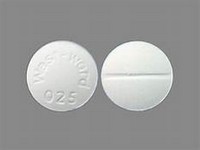Aminophylline
CLINICAL USE
DOSE IN NORMAL RENAL FUNCTION
Modified release: 225–450 mg twice daily
IV loading dose: 5 mg/kg (250–500 mg)
Maintenance dose: 0.5 mg/kg/hour adjusted
according to levels
PHARMACOKINETICS
420.4
40–60 (theophylline)
0.4–0.7 (theophylline)
4–12/Unchanged
(theophylline)
DOSE IN RENAL IMPAIRMENT
GFR (mL/MIN)
function and adjust in accordance
with blood levels
IV: Dose as in normal renal function
and adjust in accordance with blood
levels
function and adjust in accordance
with blood levels
IV: Dose as in normal renal function
and adjust in accordance with blood
levels
Oral: Dose as in normal renal
function and adjust in accordance
with blood levels
IV: Dose as in normal renal function
and adjust in accordance with blood
levels
DOSE IN PATIENTS UNDERGOING RENAL REPLACEMENT THERAPIES
Not dialysed. Dose as in
GFR <10 mL/min Monitor blood
levels. See ‘Other Information’
Not dialysed. Dose as in
GFR <10 mL/min. Monitor blood
levels. See ‘Other Information’
Unknown dialysability. Dose as in
GFR <10 mL/min Monitor blood
levels. See ‘Other Information’
Not dialysed. Dose as in GFR=10–
20 mL/min Monitor blood levels.
See ‘Other Information’
IMPORTANT DRUG INTERACTIONS
Potentially hazardous interactions with other drugs
erythromycin, ciprofloxacin, norfloxacin
and isoniazid; decreased erythromycin
levels if erythromycin is given orally;
increased risk of convulsions if given
with quinolones; rifampicin accelerates
metabolism of theophylline
or halve theophylline dose and monitor
levels; concentration reduced by St John’s
wort – avoid concomitant use
concentration of both drugs increased
with phenytoin
possibly other calcium-channel blockers
by sucralfate
ADMINISTRATION
Reconstition
–
Route
IV, oral
Rate of Administration
Loading dose over 20 minutes by slow IV
injection
Comments
lactate
line.
OTHER INFORMATION
releases free theophylline in the body.
It is therefore not present in the body
long enough to be dialysed, whereas
theophylline is dialysed, see theophylline
monograph
micromol/L)
levels above optimum range
